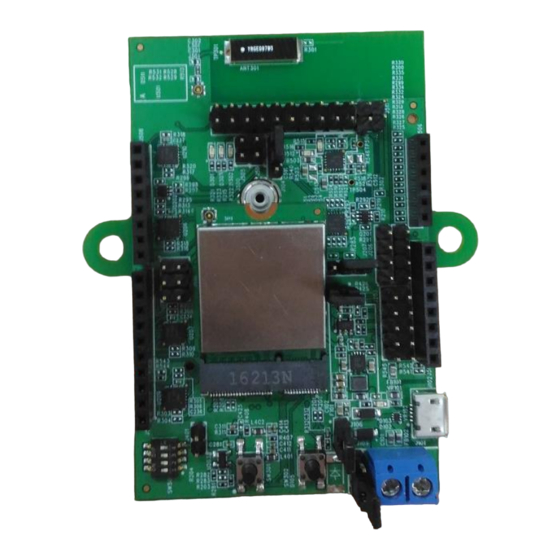
Advertisement
Advertisement
Table of Contents

Summary of Contents for Gemtek WMDD-209A
- Page 1 WMDD-209A LoRa Module User Manual Version : 1.0.2...
- Page 2 Release History Release date Release version Main Delta Arthur 2017/04/24 1.0.1 1. Initialize the document Owen Hsu 2017/09/15 1.0.2 1. Hardware design Owen Hsu change...
- Page 3 After power on, the user can access the module by AT command. In WMDD-209A, the user have to use UART to send / receive data to / from the node You can refer to the following pic and figure 2 to connect UART for using the console.
- Page 4 In ABP mode, the user needs to configure 3 parameters, which are device address, network session key, application session key. The following AT commands are for end user to set the 3 parameters on WMDD-209A. AT+ECHO=1 /*show the characters user input*/...
- Page 5 In OTAA mode, the user needs to prepare 3 parameters, which are application EUI, device EUI and application key. The following AT commands are for end user to set the 3 parameters above on WMDD-209A. AT+ECHO=1 /*show the characters user...
- Page 6 Federal Communication Commission Interference Statement This equipment has been tested and found to comply with the limits for a Class B digital device, pursuant to Part 15 of the FCC Rules. These limits are designed to provide reasonable protection against harmful interference in a residential installation. This equipment generates, uses and can radiate radio frequency energy and, if not installed and used in accordance with the instructions, may cause harmful interference to radio communications.
- Page 7 This device is intended only for OEM integrators under the following conditions: 1) The antenna must be installed such that 20 cm is maintained between the antenna and users, and 2) The transmitter module may not be co-located with any other transmitter or antenna, As long as 2 conditions above are met, further transmitter test will not be required.


Need help?
Do you have a question about the WMDD-209A and is the answer not in the manual?
Questions and answers